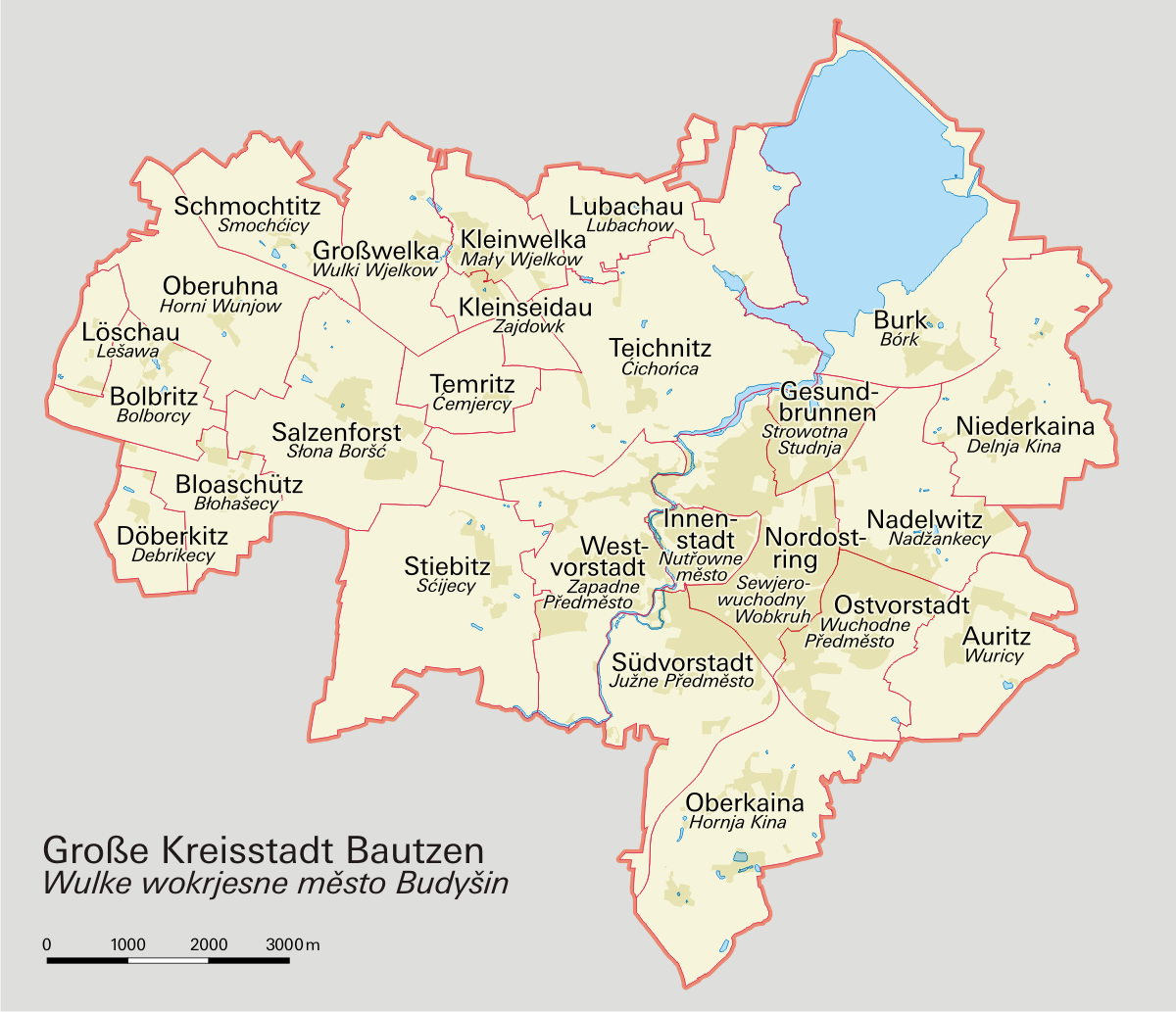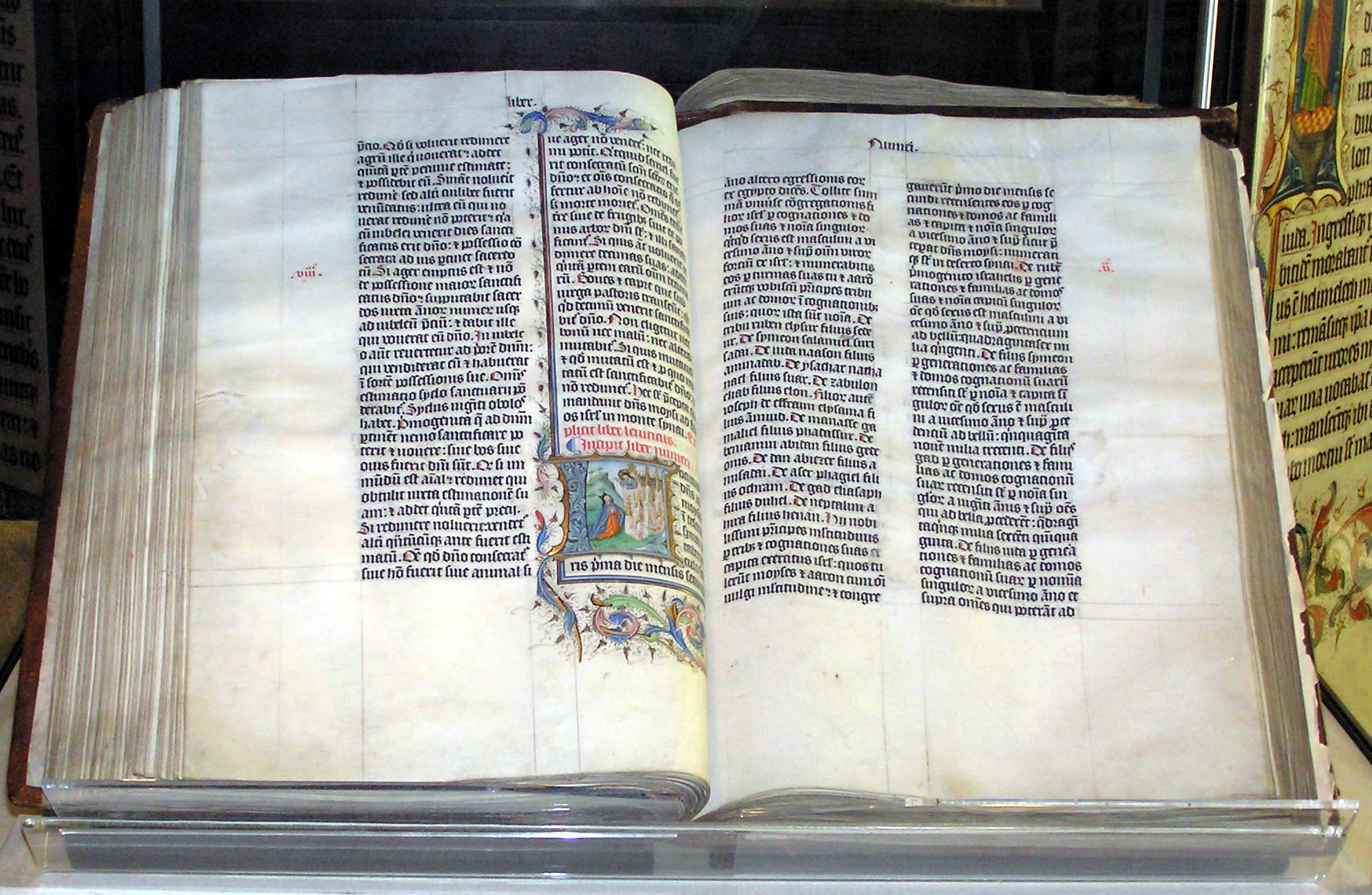|
Bible Translations Into Sorbian
Lower Sorbian The oldest Sorbian Bible version, that of the New Testament of 1547, is extant in a manuscript in the Royal Library at Berlin. The translator was Miklawš Jakubica, who employed a now-extinct dialect of Lower Sorbian. In the 18th century :de:Johann Gottlieb Fabricius ( :dsb:Jan Bogumił Fabricius), a German, made a translation of the New Testament which was printed in 1709. In a revised form this version was published by the British and Foreign Bible Society in 1860. The Old Testament, translated by J. F. Fritz, was printed at Cottbus in 1796. An edition of the entire Bible was published by the Prussian Bible Society in 1868. Upper Sorbian Michał FrencelInterpretation der Bibel - Page 1236 Jože Krašovec - 1998 "Richtungweisend für die Entwicklung der obersorbischen Schriftsprache war die Übersetzung des NT durch Michal Frencel (1628-1706). Frencel stützte sich nicht nur auf die Luther-Bibel, sondern auch auf den griechischen Urtext und andere ..." Pastor in Po ... [...More Info...] [...Related Items...] OR: [Wikipedia] [Google] [Baidu] |
Sorbian Languages
The Sorbian languages ( hsb, serbska rěč, dsb, serbska rěc) are the Upper Sorbian language and Lower Sorbian language, two closely related and partially mutually intelligible languages spoken by the Sorbs, a West Slavic ethno-cultural minority in the Lusatia region of Eastern Germany. They are classified under the West Slavic branch of the Indo-European languages and are therefore closely related to the other two West Slavic subgroups: Lechitic and Czech–Slovak.About Sorbian Language by Helmut Faska, Historically, the languages have also been known as Wendish (named after the |
Lower Sorbian Language
Lower Sorbian () is a West Slavic minority language spoken in eastern Germany in the historical province of Lower Lusatia, today part of Brandenburg. Standard Lower Sorbian is one of the two literary Sorbian languages, the other being the more widely spoken Upper Sorbian. The Lower Sorbian literary standard was developed in the 18th century, based on a southern form of the Cottbus dialect. The standard variety of Lower Sorbian has received structural influence from Upper Sorbian. Lower Sorbian is spoken in and around the city of Cottbus in Brandenburg. Signs in this region are typically bilingual, and Cottbus has a '' Lower Sorbian Gymnasium'' where one language of instruction is Lower Sorbian. It is a heavily endangered language. Most native speakers today belong to the older generations. Phonology The phonology of Lower Sorbian has been greatly influenced by contact with German, especially in Cottbus and larger towns. For example, German-influenced pronunciation tends t ... [...More Info...] [...Related Items...] OR: [Wikipedia] [Google] [Baidu] |
Cottbus
Cottbus (; Lower Sorbian: ''Chóśebuz'' ; Polish: Chociebuż) is a university city and the second-largest city in Brandenburg, Germany. Situated around southeast of Berlin, on the River Spree, Cottbus is also a major railway junction with extensive sidings/depots. Although only a small Sorbian minority lives in Cottbus itself, the city is considered as the political and cultural center of the Sorbs in Lower Lusatia. Spelling Until the beginning of the 20th century, the spelling of the city's name was disputed. In Berlin, the spelling "Kottbus" was preferred, and it is still used for the capital's ("Cottbus Gate"), but locally the traditional spelling "Cottbus" (which defies standard German-language rules) was preferred, and it is now used in most circumstances. Because the official spelling used locally before the spelling reforms of 1996 had contravened even the standardized spelling rules already in place, the (german: Ständiger Ausschuss für geographische Namen) stre ... [...More Info...] [...Related Items...] OR: [Wikipedia] [Google] [Baidu] |
Großpostwitz
Großpostwitz (German) or Budestecy (Upper Sorbian) is a municipality in the east of Saxony, Germany. It belongs to Bautzen district and lies south of the town of Bautzen. The municipality except Eulowitz is part of the recognized Sorbian settlement area in Saxony. Upper Sorbian has an official status next to German, all villages bear names in both languages. Geography The municipality is situated at the northern edge of the Lausitzer Bergland (''Lusatian Hills'') along the Spree. The Bundesstraße 96 passes Großpostwitz. Villages Several villages belong to the municipality: *Berge/Zahor *Binnewitz/Bónjecy *Cosul/Kózły *Ebendörfel/Bělšecy *Eulowitz/Jiłocy *Großpostwitz/Budestecy *Klein Kunitz/Chójnička *Mehltheuer/Lubjenc *Rascha/Rašow *Denkwitz/Dźenikecy History Within the German Empire (1871-1918), Großpostwitz was part of the Kingdom of Saxony The Kingdom of Saxony (german: Königreich Sachsen), lasting from 1806 to 1918, was an independent member of a ... [...More Info...] [...Related Items...] OR: [Wikipedia] [Google] [Baidu] |
Upper Sorbian Language
Upper Sorbian (), occasionally referred to as "Wendish", is a minority language spoken by Sorbs in Germany in the historical province of Upper Lusatia, which is today part of Saxony. It is grouped in the West Slavic language branch, together with Lower Sorbian, Czech, Polish, Slovak and Kashubian. History The history of the Upper Sorbian language in Germany began with the Slavic migrations during the 6th century AD. Beginning in the 12th century, there was a massive influx of rural Germanic settlers from Flanders, Saxony, Thuringia and Franconia. This so-called "Ostsiedlung" (eastern settlement or expansion) led to a slow but steady decline in use of the Sorbian language. In addition, in the Saxony region, the Sorbian language was legally subordinated to the German language. Language prohibitions were later added: In 1293, the Sorbian language was forbidden in Berne castle before the courts; in 1327 it was forbidden in Zwickau and Leipzig, and from 1424 on it was forbidden ... [...More Info...] [...Related Items...] OR: [Wikipedia] [Google] [Baidu] |
Zittau
Zittau ( hsb, Žitawa, dsb, Žytawa, pl, Żytawa, cs, Žitava, :de:Oberlausitzer Mundart, Upper Lusatian Dialect: ''Sitte''; from Slavic languages, Slavic "''rye''" (Upper Sorbian and Czech: ''žito'', Lower Sorbian: ''žyto'', Polish: ''żyto'')) is the southeasternmost city in the Germany, German state of Saxony, and is located in the Görlitz (district), district of Görlitz, Germany's easternmost Districts of Germany, district. It has a population of around 25,000, and is one of the most important cities in the region of Lusatia (Upper Lusatia). The inner city of Zittau still shows its original beauty with many houses from several architectural periods: the famous town hall built in an Italian style, the church of St John and the stables (''Salzhaus'') with its medieval heritage. This multi-storied building is one of the oldest of its kind in Germany. Geography Zittau sits on the Mandau River, while the Lusatian Neisse, which forms the border with Poland, touches the city i ... [...More Info...] [...Related Items...] OR: [Wikipedia] [Google] [Baidu] |
Bautzen
Bautzen () or Budyšin () is a hill-top town in eastern Saxony, Germany, and the administrative centre of the district of Bautzen. It is located on the Spree river. In 2018 the town's population was 39,087. Until 1868, its German name was ''Budissin''. In 1945 the Battle of Bautzen was Hitler’s last victory against the Soviet Union during the Battle of Berlin . Bautzen is often regarded as the unofficial, but historical capital of Upper Lusatia. The town is also the most important cultural centre of the Sorbian minority, which constitutes about 10 percent of Bautzen's population. Asteroid '' 11580 Bautzen'' is named in honour of the city. Names Like other cities and places in Lusatia, Bautzen has several different names across languages. Its German name was also officially changed in 1868. As well as ''Bautzen'' (German) and ''Budyšin'' (Upper Sorbian), the town has had the following names: * German: ''Budissin'' (variants used from c. 11th century onwards; Saxon governme ... [...More Info...] [...Related Items...] OR: [Wikipedia] [Google] [Baidu] |
Upper Lusatia
Upper Lusatia (german: Oberlausitz ; hsb, Hornja Łužica ; dsb, Górna Łužyca; szl, Gōrnŏ Łużyca; pl, Łużyce Górne or ''Milsko''; cz, Horní Lužice) is a historical region in Germany and Poland. Along with Lower Lusatia to the north, it makes up the region of Lusatia, named after the Slavic ''Lusici'' tribe. Both parts of Lusatia are home to the West Slavic minority group of the Sorbs. The major part of Upper Lusatia is part of the German federal state of Saxony, roughly comprising Bautzen district and Görlitz district. The northwestern extremity, around Ruhland and Tettau, is incorporated into the Oberspreewald-Lausitz district of the state of Brandenburg. The eastern part of Upper Lusatia is in Poland, east of the Neisse (''Nysa'') river, in Lower Silesian Voivodeship. A small strip of land in the north around Łęknica is incorporated into Lubusz Voivodeship, along with the Polish part of Lower Lusatia. The historic capital of Upper Lusatia is Bautzen/ ... [...More Info...] [...Related Items...] OR: [Wikipedia] [Google] [Baidu] |
Bible Translations By Language
The United Bible Societies reported that the Bible, in whole or part, has been translated in more than 3,324 languages (including an increasing number of sign languages), including complete Old or New Testaments in 2,189 languages, and the complete text of the Bible (Protestant canon) in 804 languages. According to Wycliffe Bible Translators, in October 2017, 3,312 languages had access to at least a book of the Bible, including 1,121 languages with a book or more, 1,521 language groups with access to the New Testament in their native language and 670 the full Bible. It is estimated by Wycliffe Bible Translators that translation may be required in 1,636 languages where no work is currently known to be in progress. They also estimate that there are currently around 2,584 languages which have active Bible translation projects (with or without some portion already published). [...More Info...] [...Related Items...] OR: [Wikipedia] [Google] [Baidu] |





